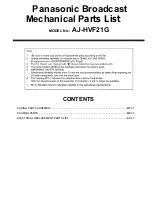
USER MANUAL
STM 550 / EMSI
–
ENOCEAN MULTISENSOR FOR IOT APPLICATIONS
© 2020 EnOcean | www.enocean.com F-710-017, V1.0
STM 550 / EMSI User Manual | v1.3 | September 2020 | Page 34/97
5.2.7
Signal telegram
SIGNAL telegrams are used to encode generic system conditions independent of specific
sensor functionality of the device. Examples of such system conditions are internal energy
level, available ambient energy and backup battery status.
SIGNAL telegrams are identified by having the RORG field of the data telegram set to 0xD0.
After that, the SIGNAL type (what is reported) is identified by the 1 byte long MID field
which is followed by the data corresponding to this SIGNAL type. Figure 21 below shows
the structure of a SIGNAL telegram.
Figure 21
–
SIGNAL Telegram Structure
Table 6 below lists the SIGNAL types supported by STM 550 together with their reported
data.
MID Content
Data
0x06 Energy status (remaining energy)
1 byte integer value (expressing %)
Valid values:
0 … 100
0x0D Energy delivery of the harvester
1 byte Enumeration
Valid values: 0x00 (best) ... 0x04 (worst)
0x0E Radio disabled
Transmitted upon entering standby mode
No additional data
0x10 Backup battery status
1 byte integer value (expressing %)
Valid values: 0 … 100
Table 6
–
Supported SIGNAL Types
The transmission of each supported SIGNAL telegram can be individually enabled and disa-
bled using the via the SIGNAL configuration register of the NFC interface as described in
chapter 9.5.9.
STM 550 will transmit each of the enabled SIGNAL telegram types once for every
n
EEP
(data) telegrams with
n
being a configurable parameter that can be set via the SIGNAL
configuration register of the NFC interface as described in chapter 9.5.9.
The default setting is that each enabled SIGNAL telegram type will be transmitted once
every 32 EEP (data) telegrams, i.e. STM 550 will provide an update about the enabled in-
ternal parameters approximately once every 32 minutes.














































